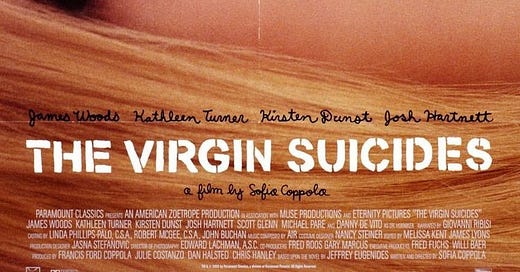Sofia Coppola's The Virgin Suicides is a sequence of stunning cinematography depicting Eugenide's timeless tragic tale of girlhood and melancholy. It follows five male friends who become captivated by the mystery of the Lisbon sisters and the chain of events that follow the first of their suicides.
Coppola described how she “immediately saw the central story as being what distance and time and memory do to you, and about the extraordinary power of the unfathomable." In a fusion of coming-of-age, teen drama, and tragedy, the film constantly evokes a feeling of nostalgia for youth and laments the past misfortunes that continue to haunt us into later life.
The use of music and mise-en-scene truly define the wondrous nature of The Virgin Suicides creating the nostalgia of girlhood that characterises the tragic tale. The original score by the French electronic band Air conveys the consistent theme of intertwining adolescence and despair, through a slow rhythm and sorrow-seeped vocals. Perhaps the most notable prop in the film, the true symbol of The Virgin Suicides, is the pink lacy bra over a crucifix - not only linking to the suppression of the girls’ sexualities in such a religious household but also showing the destruction of innocence by societal pressures. Additionally, the use of contrasting warm and cool colours throughout the film is a physical manifestation of the girls’ emotions which flow through the shots, highlighting the hold emotions have on our memories.
The film primarily comments on the haunting impact of the male gaze, as The Lisbon Sisters fade into undistinguishable beings in a way that many girls also feel, due to the oppression of modern society. However, it touches on the nostalgia of youth through the use of stills, montages and collages, creating the feeling of the endless nature of time that many people feel when young.
Artistically wondrous and outstandingly book-accurate, it is no surprise that The Virgin Suicides has been dubbed a cult classic.





